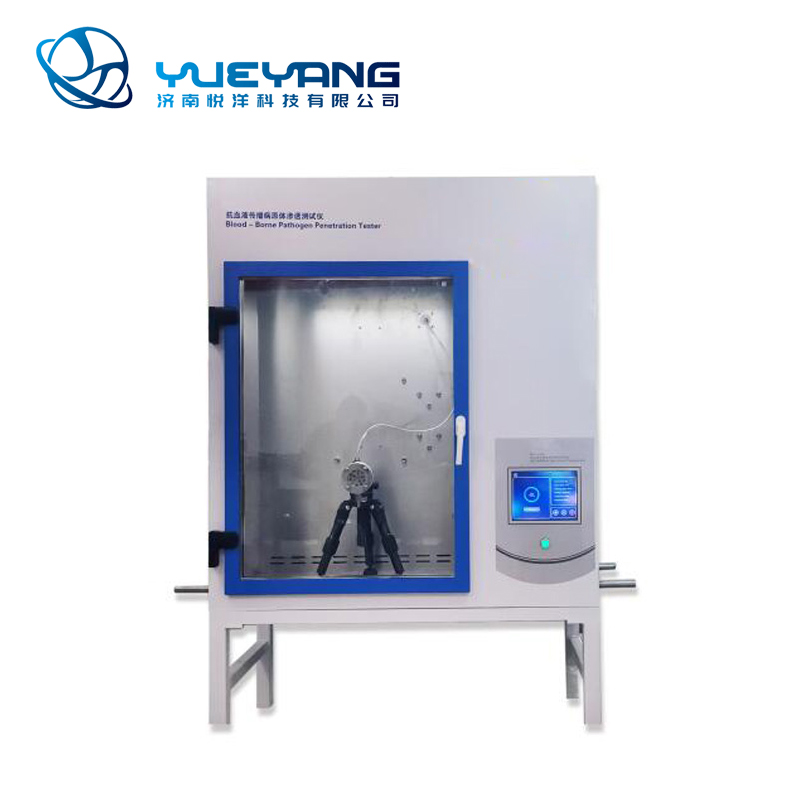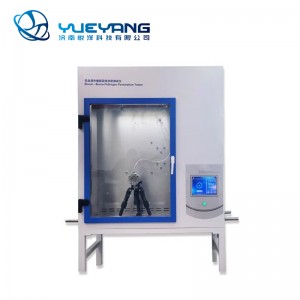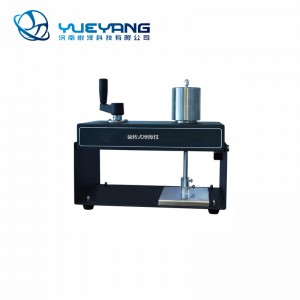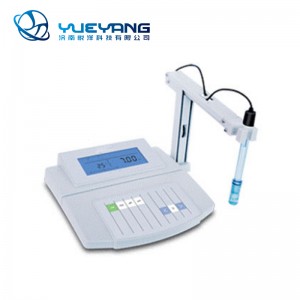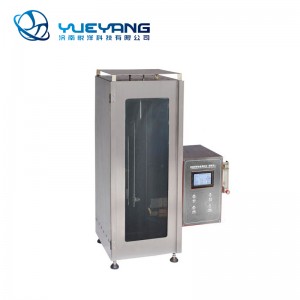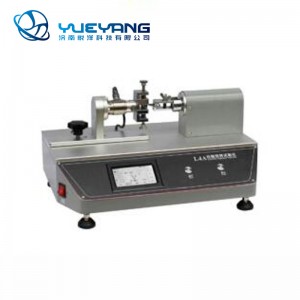YYT-1000A Anti-Bloodborne Pathogen Penetration Tester
This instrument is specially designed for testing the permeability of medical protective clothing against blood and other liquids; the hydrostatic pressure test method is used to test the penetration ability of protective clothing materials against viruses and blood and other liquids. Used to test the permeability of protective clothing to blood and body fluids, blood pathogens (tested with Phi-X 174 antibiotic), synthetic blood, etc. It can test the anti-liquid penetration performance of protective equipment including gloves, protective clothing, outer covers, coveralls, boots, etc.
●Negative pressure experiment system, equipped with fan exhaust system and high efficiency filter for inlet and outlet to ensure the safety of operators;
●Industrial-grade high-brightness color touch screen;
●U disk export historical data;
●The pressure point pressurization method adopts automatic adjustment to ensure the accuracy of the test.
●The special stainless steel penetrating test tank guarantees a firm grip on the sample and prevents synthetic blood from splashing around;
●Imported pressure sensor with accurate data and high measurement accuracy. Volume data storage, save historical experimental data;
●The cabinet has built-in high-brightness lighting;
●Built-in leakage protection switch to protect the safety of operators;
●The stainless steel inside the cabinet is integrally processed and formed, and the outer layer is sprayed with cold-rolled plates, and the inner and outer layers are insulated and flame retardant.
In order to prevent damage to your blood-borne pathogen penetration tester experimental system, please read the following safety instructions carefully before using this equipment, and keep this manual so that all product users can refer to it at any time.
① The operating environment of the experimental instrument should be well ventilated, dry, free of dust and strong electromagnetic interference.
② The instrument should be powered off for more than 10 minutes if it works continuously for 24 hours to keep the instrument in good working condition.
③ Poor contact or disconnection may occur after long-term use of the power supply. Check and repair before each use to ensure that the power cord is free from damage, cracks, or disconnection.
④ Please use a soft cloth and neutral detergent to clean the instrument. Before cleaning, make sure to disconnect the power supply. Do not use thinner or benzene or other volatile substances to clean the instrument. Otherwise, the color of the instrument casing will be damaged, the logo on the casing will be wiped off, and the touch screen display will be blurred.
⑤ Please do not disassemble this product by yourself, please contact our company's after-sales service in time if you encounter any failure.
The front structure diagram of the host of the anti-dry microorganism penetration test system, see the following figure for details:
|
The main parameters |
Parameter range |
|
Power supply |
AC 220V 50Hz |
|
Power |
250W |
|
Pressure method |
Automatic adjustment |
|
Sample size |
75×75mm |
|
Clamp torque |
13.6N.M |
|
Pressure area |
28.27cm² |
|
Negative pressure range of negative pressure cabinet |
-50~-200Pa |
|
High efficiency filter filtration efficiency |
Better than 99.99% |
|
Ventilation volume of negative pressure cabinet |
≥5m³/min |
|
Data storage capacity |
5000 groups |
|
Host size |
(Length 1180×Width 650×Height 1300)mm |
|
Bracket size |
(Length 1180×Width 650×Height 600)mm, height can be adjusted within 100mm |
|
Total Weight |
About 150kg |
ISO16603--Clothing for protection against contact with blood and body fulids--Determination of the resistance of protective clothing materials to penetration by blood and body fluids-Test method using synthetic blood
ISO16604--Clothing for protection against contact with blood and body fluids--Determination of resistance of protective clothing materials to penetration by blood-borne pathogens--Test method using Phi-X174 bacteriophage
ASTM F 1670---Standard Test Method for Resistance of Materials Used in Protective Clothing to Penetration by Synthetic Blood
ASTM F1671--Standard Test Method for Resistance of Materials Used in Protective Clothing to Penetration by Blood-Borne Pathogens Using Phi-X174 Bacteriophage Penetration as a Test System




